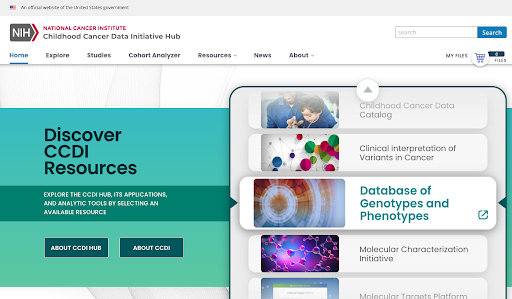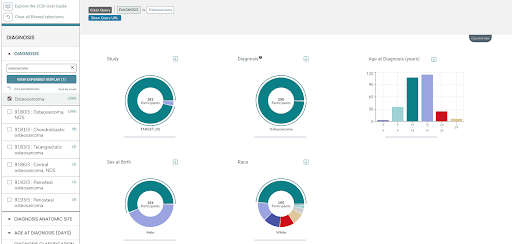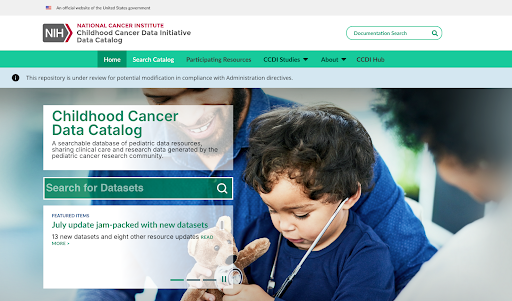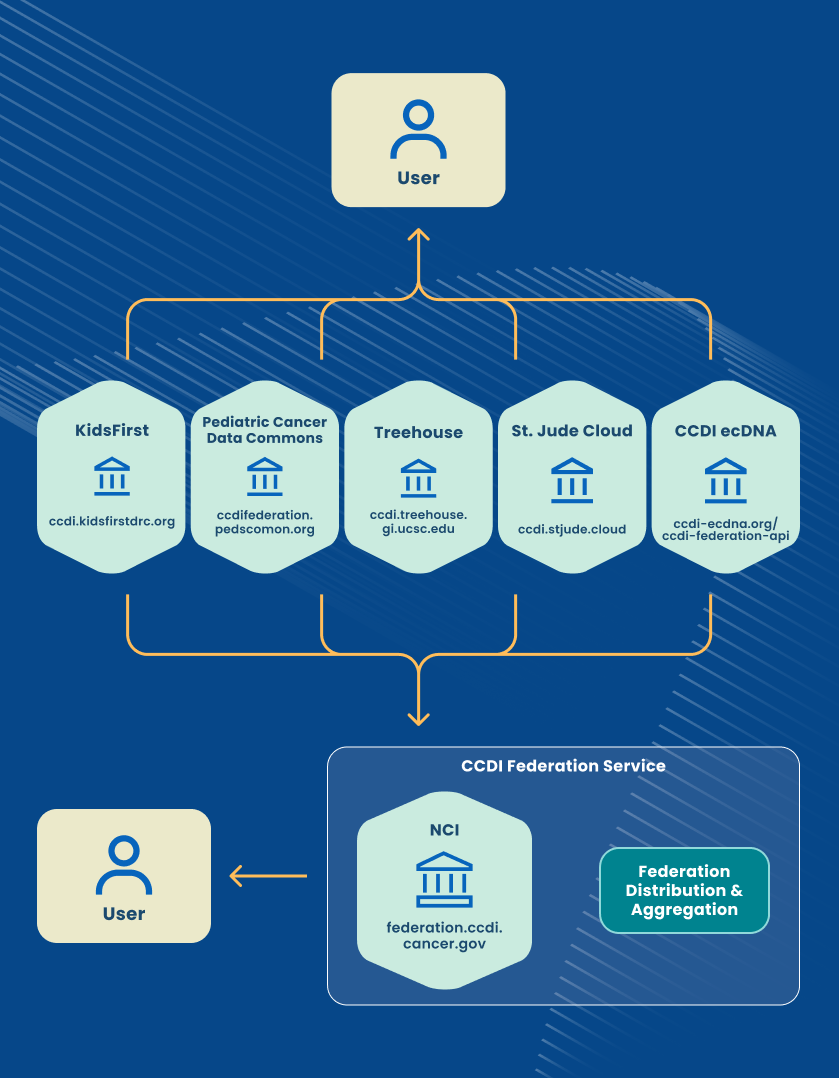
Written by Subhashini Jagu, CCDI
This September, in honor of Childhood Cancer Awareness Month, we're shining a light on the Childhood Cancer Data Initiative (CCDI)—a groundbreaking effort by the NCI to revolutionize how data is collected, shared, and used in childhood cancer research and care. Our latest blog post explores how CCDI is unlocking new opportunities for discovery in rare pediatric cancers, such as osteosarcoma, by making comprehensive clinical, molecular, and patient-reported data more accessible and usable. Learn how researchers, clinicians, and families can get involved—and how the voice of the patient is helping to shape the future of precision medicine for kids and young adults with cancer.
What are the main goals of CCDI, and how does it aim to transform the landscape of childhood cancer research and care?
CCDI is an effort to connect and broadly share childhood cancer clinical, research, and state cancer registry data. Through specially designed programs and custom-built platforms and tools that enable easier access to data, CCDI aims to accelerate progress in childhood cancer research. The initiative has three key goals:
- Gather data from every child, adolescent, and young adult diagnosed with a childhood cancer, regardless of where they receive their care
- Create a national strategy of using molecular characterization to improve diagnosis accuracy and potentially inform treatment options for all types of childhood cancers
- Develop a platform and tools to bring together clinical care, registry, and research data to support investigations aimed at improving prevention, treatment, quality of life, and survivorship for childhood cancers

CCDI emphasizes data sharing and interoperability. Why is this especially critical in rare pediatric cancers like osteosarcoma, which is marked by extreme genomic complexity and low incidence?
Data sharing and interoperability are especially critical for rare pediatric cancers like osteosarcoma, which has both low incidence and high genomic complexity. No single institution sees enough cases to draw meaningful conclusions on its own. To advance research and develop effective treatments, scientists need access to comprehensive, well-structured data from multiple sources. CCDI enables this by making data more findable, accessible, and usable across institutions. This collaborative approach allows researchers to uncover patterns, identify potential targets, and accelerate discoveries, transforming how rare cancers like osteosarcoma are diagnosed and treated.
What types of data does CCDI collect, and how can researchers studying osteosarcoma or other sarcomas access and contribute to it? Are there any upcoming projects or datasets in development that might be of particular interest to the sarcoma research community?
CCDI collects a wide range of data to support pediatric and AYA cancer research, including clinical data (e.g., diagnosis, treatment, outcomes), patient-reported outcomes, and molecular (genomic, transcriptomic), imaging, and biospecimen data. Researchers studying osteosarcoma or other sarcomas can discover relevant data sets through the CCDI Hub, CCDI Childhood Cancer Data Catalog, and National Childhood Cancer Registry Data Platform, and apply for access to controlled data sets via the database of Genotypes and Phenotypes (dbGaP).
An upcoming effort of particular interest is the CCDI Pediatric, Adolescent, and Young Adult Rare Cancer Study, which focuses on rare solid tumors and aims to establish a long-term observational cohort. Researchers are encouraged to connect with the CCDI team to learn more about available data, contribution opportunities, and ongoing initiatives.


Can you share specific examples of how CCDI data has been used (or could be used) in sarcoma research or clinical decision-making?
CCDI data can be leveraged in several ways to support sarcoma research and inform clinical decision-making. Through the Molecular Characterization Initiative (MCI), CCDI provides genomic characterization data that helps researchers identify genomic alterations. These data sets can be used to explore associations between specific mutations and clinical outcomes, assess treatment responses, identify potentially druggable targets, better understand sarcoma biology, and inform the design of precision medicine trials. As CCDI expands its efforts, researchers will also gain access to longitudinal clinical data, offering valuable insights into disease progression and long-term outcomes. This could potentially support both translational research and evidence-based care decisions.
How is CCDI incorporating the patient voice, especially from rare cancer communities, to guide its priorities and design?
CCDI places a strong emphasis on incorporating the patient voice into its planning and priorities. Patient advocates and caregivers actively participate in CCDI symposiums, webinars, and other activities, where they help shape strategies for data collection, sharing, and access, as well as study design, consent processes, and data use policies. Their insights ensure that CCDI efforts reflect the real-world needs and experiences of families affected by pediatric and AYA cancers.
By embedding patient perspectives into decision-making, CCDI not only advances scientific goals but also upholds patient-centered values such as transparency, trust, and equity. This ultimately builds a research ecosystem that is more inclusive, responsive, and impactful for the communities it serves.
What do you see as the most exciting or promising developments on the horizon for CCDI?
One of the most exciting developments on the horizon for CCDI is the expansion of its data discovery capabilities through tools like the CCDI cBioPortal Cancer Data Explorer and the CCDI Data Federation Resource. These efforts are making it easier for researchers to find and connect to relevant pediatric cancer datasets, even those outside the CCDI Data Ecosystem.

The CCDI cBioPortal Cancer Data Explorer is a new, user-friendly platform that enables researchers to explore and analyze complex genomic data without downloading or processing large data sets. Users can search by gene, mutation, cancer type, or patient to quickly visualize relationships, patterns, and trends in the data. The pilot version includes mutation data extracted from MCI, with additional data sets from the CCDI Hub to be added over time.
In parallel, the Data Federation Resource is an application programming interface that enables secure, interoperable search across distributed data sets, linking CCDI data with external repositories. Together, these tools are transforming how researchers discover and access data, accelerating insights and collaboration, particularly for rare pediatric cancers where data is often scattered across systems.
How can sarcoma-focused institutions, clinicians, researchers, or even patients and families get involved or support CCDI’s mission?
There are a few ways to support CCDI, including:
Spreading the word is also helpful! If someone is using CCDI resources, participating in CCDI programs, or if they think others in their network could benefit from learning more about CCDI, they can use this toolkit.